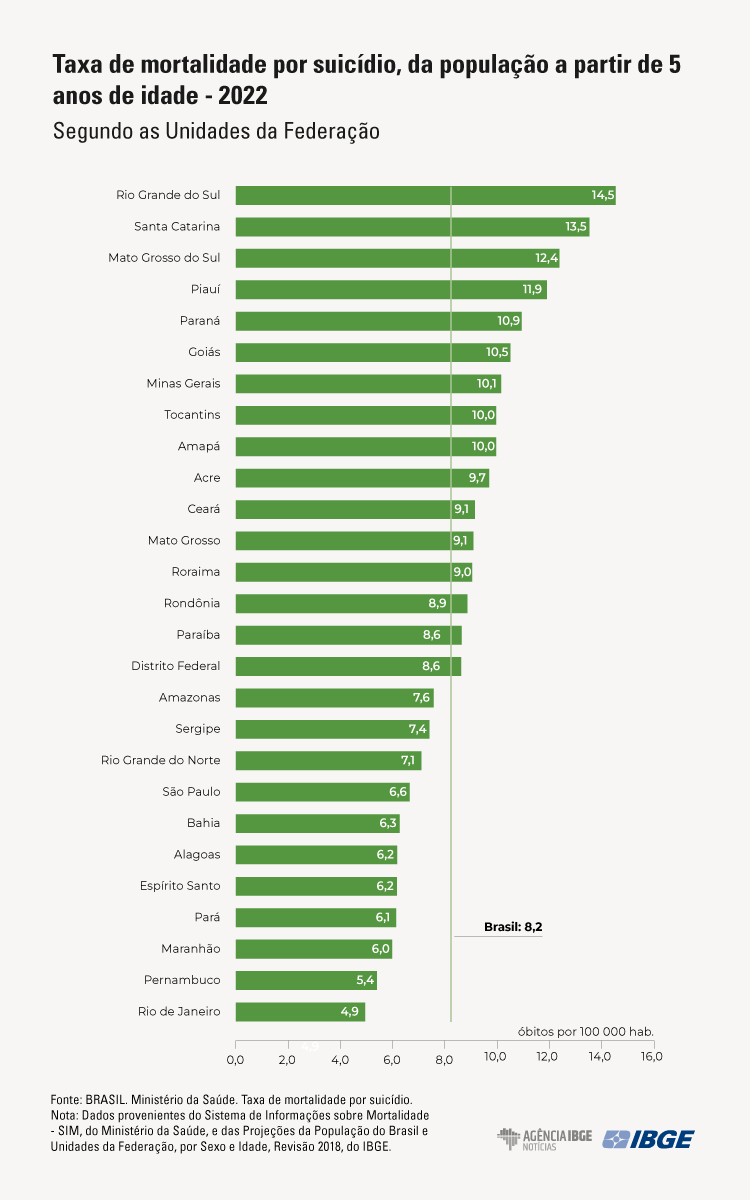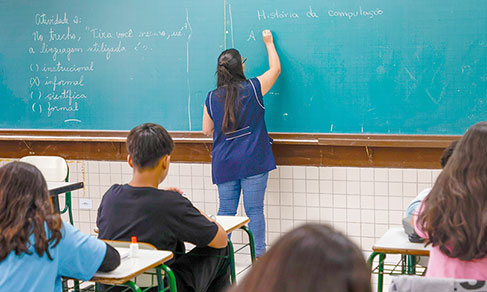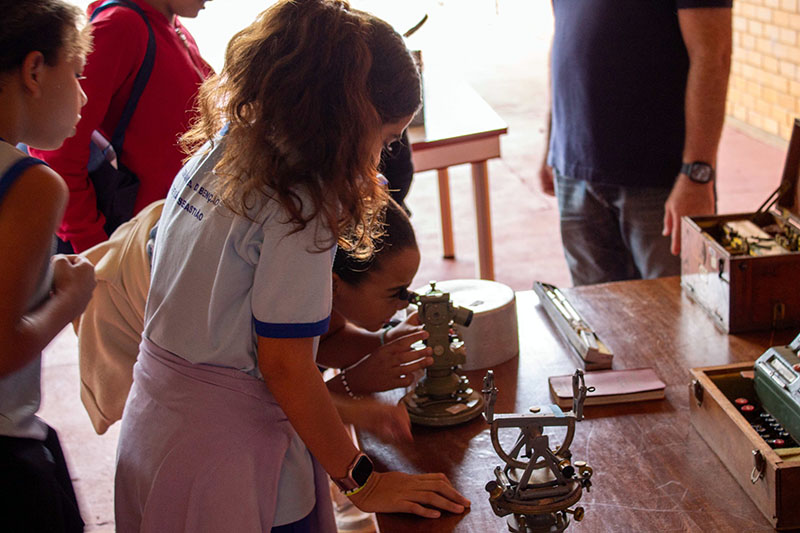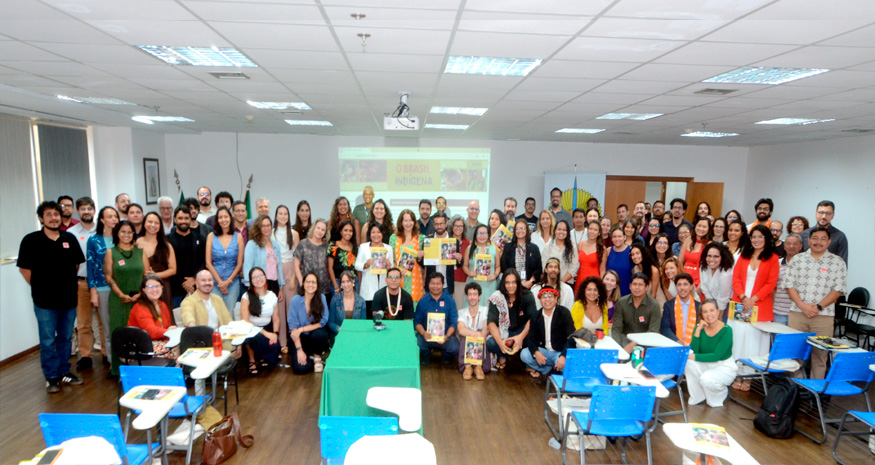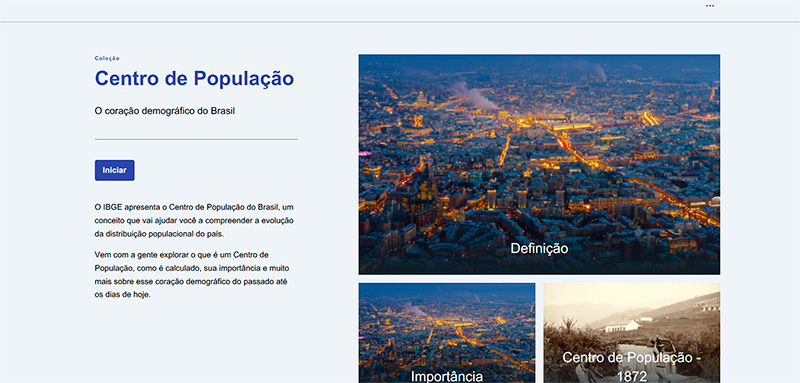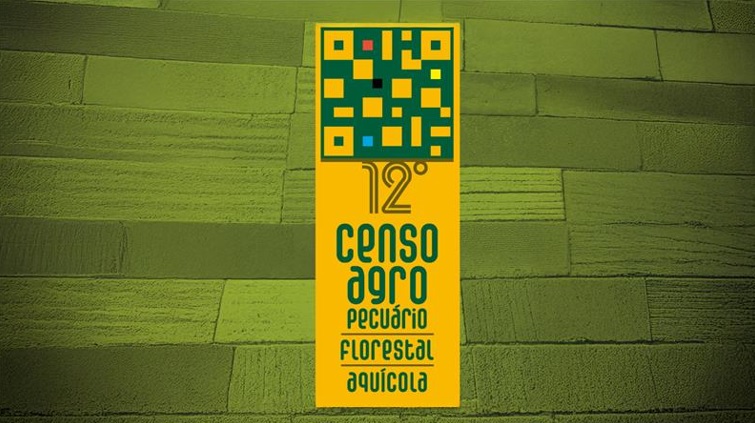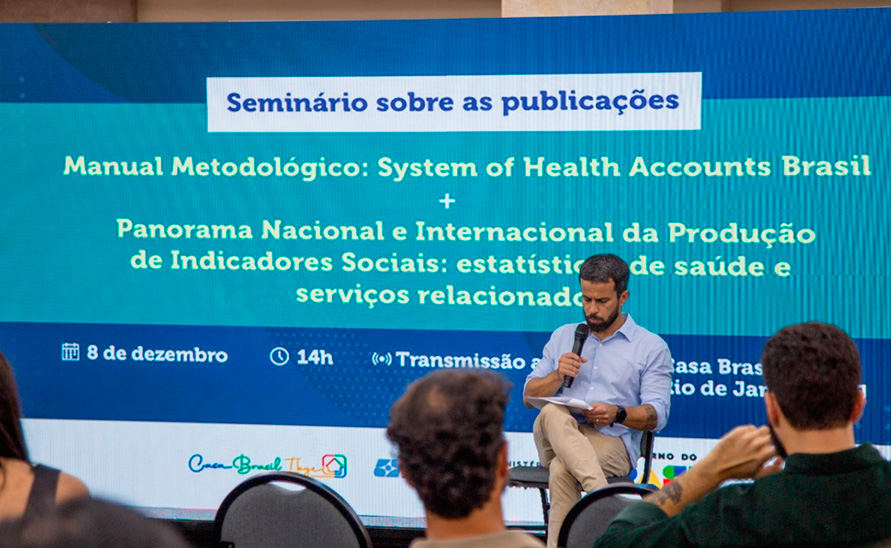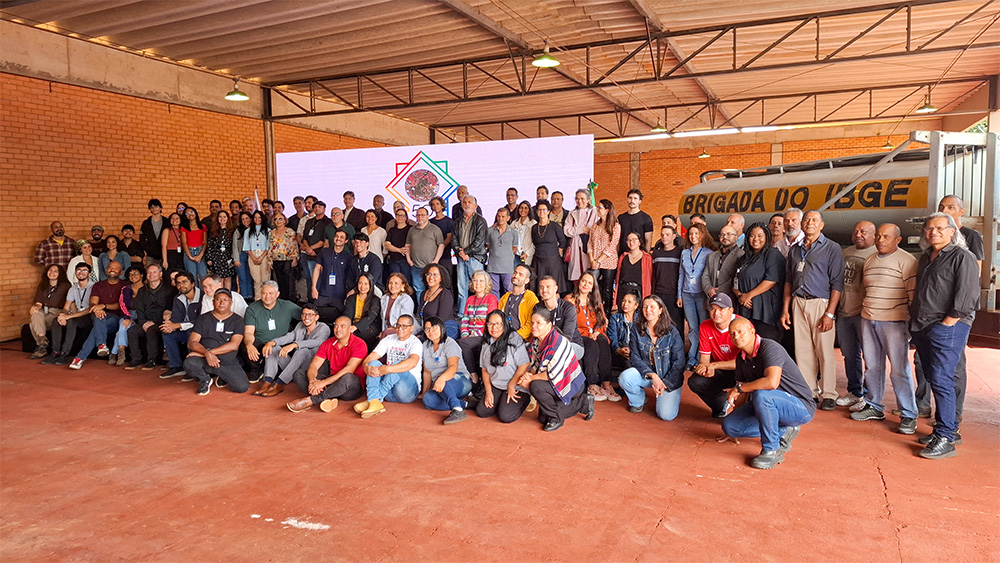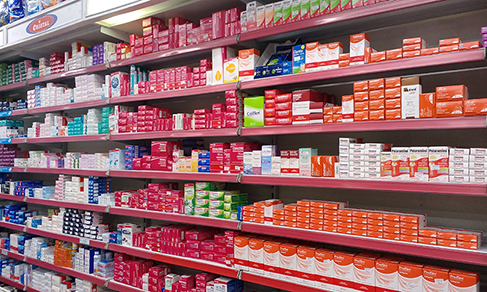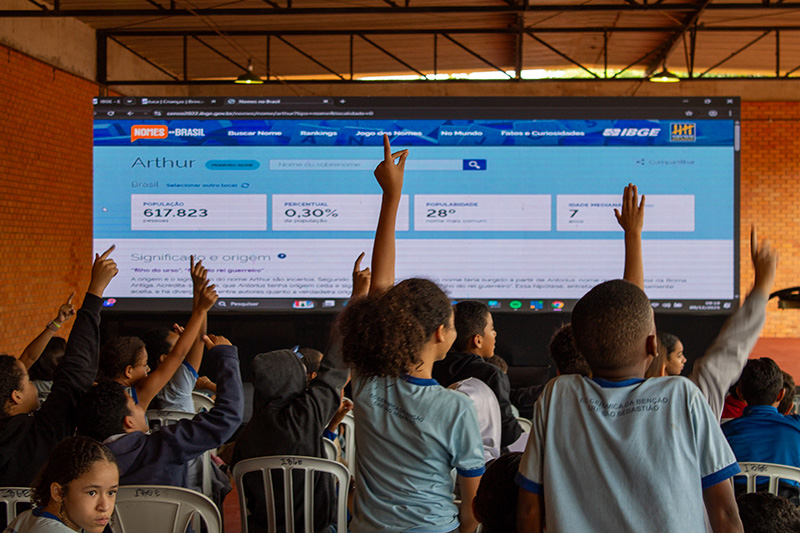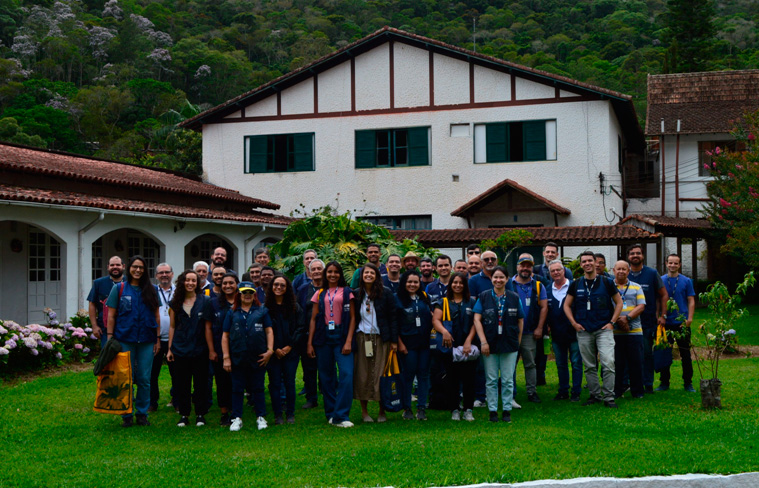ODS
IBGE launches Health and Maps Modules of series Creating Synergies between the 2030 Agenda for Sustainable Development and the G20
June 11, 2025 10h00 AM | Last Updated: June 12, 2025 12h49 PM
Highlights
- The new module of series Creating Synergies between the 2030 Agenda and the G20 presents Health indicators.
- Also being launched is the second edition of the Maps Module, with worid maps of indicators having Brazil in the center of the projection.
- In 2022, Brazil had the fourth highest mortality rate of children under 5 years of age among G20 member countries.
- Brazil had, in 2022, the worst measles and DTP vaccination coverage rate in comparison with other analyzed countries.
- In 2019, Brazil had the sixth lowest suicide mortality rate (6.9 per 100 thousand).
- In 2022, suicide mortaliy rate in Brazil reached 8.2 per 100 thousand, being highest in Rio Grande do Sul (14.5 per 100 thousand) and Rio de Janeiro (4.9 per 100 thousand).

The Brazilian Institute of Geography and Statistics (IBGE) launches, this Wednesday (11), the third thematic module of series Creating Synergies between the 2030 Agenda and the G20. The volume gathers Health indicators in relation to the Sustainable Development Goal (SDG) 3, and spotlights the position of Brazil in relation to other G20 member countries, also revealing regional differences in the country itself. The previous modules focused on Inequalities and Environment indicators.
Also being launched the second edition of the Maps Module, as part of the same series. This edition presents world maps of all the indicators dealt with in previous topics, having Brazil represented in the center of the map projection; it also includes maps and graphs from the new Health module.
Both modules will be launched this afternoon, with a thematic panel session during the “Triple International Forum on Global South Governance - New indicators and strategic themes for development and sustainability in the Digital Age,", which is being held in and the Events Center of Ceará (Av. Washington Soares, 999).
“Health is an essential condition for the sustainable development of a country. The mortality and vaccination indicators presented in the Health module allow one to understand the health issues of populations in G20 member countries and serve as a basis for the identification of intervention priorities and the formulation of public policies by governments, based on evidence, in order to achieve goals in the 2023 Agenda," stated Denise Kronemberger, coordinator of the 2030 Agenda project at the IBGE.
The publication presents the following indicators: Mortality rate of persons under 5 years of age; Neonatal mortality rate; Mortality rate attributed to circulatory system diseases, malignant tumors, diabetes mellitus and chronic respiratory diseases; Suicide mortality rate; Deaths from road traffic accidents; Vaccination coverage (DTP, measles, triple viral, pneumococcal and HPV).
Brazil has the fourth lowest mortality rate of children under 5 among G20 member countries
The data available on the SDG Brazil Portal which, in 2022, last year available for the series, show that the mortality rate of children under 5 years of age in Brazil (15.5 per 1,000 live births) was below the target (25 per 1,000 live births). However, among G20 member countries listed in the UN Global SDG Indicators Database, that was the fourth highest, only behind South Africa (34.5‰), India (29.1‰) and Indonesia (21.3‰). The other Latin American countries, Mexico and Argentina, had lower rates, 12.8‰ and 9.4‰, respectively. For the sake of comparison, the global rate was 37‰ in 2022, according to the latest UN report on the SDG. 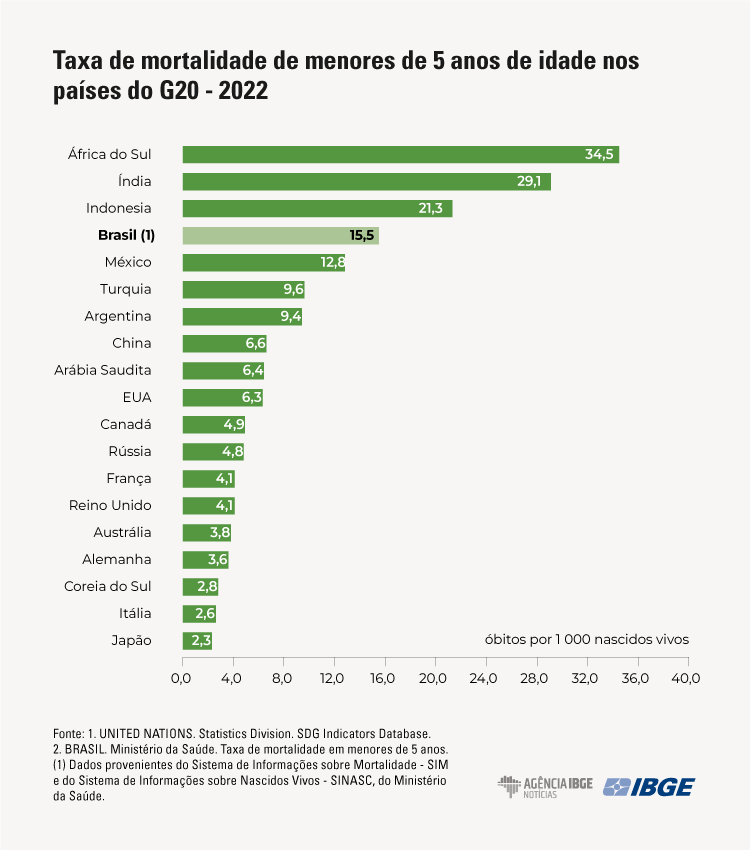 Broadly speaking, this indicator represents socioeconomic development, environment infrastructure and quality of resources available for maternal and infant health care. High rates indicate incidence of factors that lead to child malnutrition, associated infections and/or the poor means of subsistence of the family and situations of inequality. Nevertheless, reduced rates might hide bad life conditions in specific social segments.
Broadly speaking, this indicator represents socioeconomic development, environment infrastructure and quality of resources available for maternal and infant health care. High rates indicate incidence of factors that lead to child malnutrition, associated infections and/or the poor means of subsistence of the family and situations of inequality. Nevertheless, reduced rates might hide bad life conditions in specific social segments.
As for Major Regions, Roraima recorded the highest child mortality rate, with 25.1 deaths per 1,000 live births, above the global target, followed by Amapá (23.5‰) and Acre (21.5‰). The lowest rates, on the other hand, were registered by Santa Catarina (11.5‰), Federal District, Rio Grande do Sul (12.2‰) and Paraná (12.5‰). It is worth mentioning that all the states in the North Region have indicators above the national average.
Brazil reaches neonatal mortality target, but records worst result among G20 member countries
Neonatal mortality rate refers to deaths of babies up to 27 days old. The target set by the United Nations for this indicator was 12‰. In 2022, the estimated neonatal mortality rate in Brazil was 8.7‰. As for infant mortality, Brazil is already below the target, although still holding one of the highest rates among G20 member countries, only behind India (18.1‰), South Africa (11.0‰) and Indonesia (10.7‰). Moreover, we had the worst indicator among G20 member countries: in Mexico, neonatal mortality rate was 7.8‰ and in Argentina, 5.7‰. The global rate reached 17‰ in 2022.
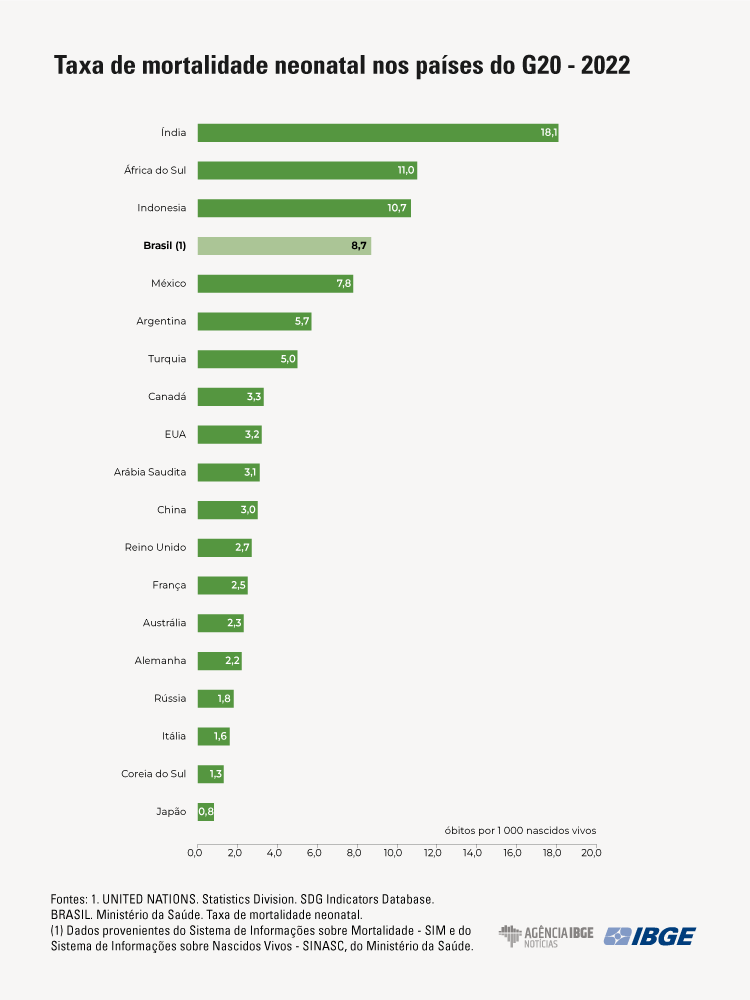
Regarding Federation Units, all the states in the North had indicators above the national average (8.7‰), with Amapá (12.6‰) and Sergipe (12,1‰) recording neonatal rates above the target for this SDG.
Brazil has the worst vaccination coverage for measles and DTP
The study also presents Indicator 3.b.1: Population covered by all vaccines included in the National Immunization Program .
It was observed that the country had, in 2022, the worst vaccination coverage for Diphteria, Tetanus and Pertussis/Whooping Cough - DTP (77.0% of the target populations), among G20 countries, being, therefore, below South Africa (85.0%), Mexico (83.0%) and Argentina (81.0%).
As for measles, vaccination coverage was the lowest among G20 countries in 2022. That year, the Brazilian rate was 58.0%, and the difference separating it from the second lowest (Indonesia, 67.0%) was equivalent to 9 p.p. From Mexico, with a coverage of 82.0%, the difference corresponded to 24 percentage points.
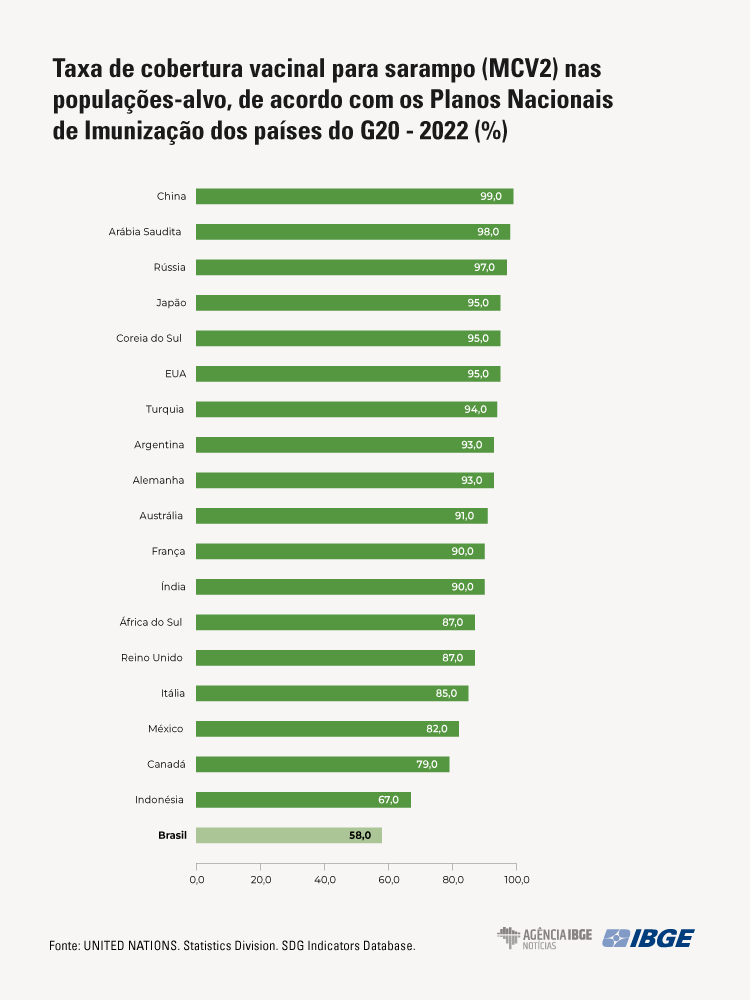
Coverage of the triple viral vaccine, against measles, mumps and rubella, fell from 79.9%, in 2015, to 65.8%, in 2023, in Brazil as a whole, which means a drop of 17.8%. Data show an overall decrease in vaccination coverage, between 2015 and 2023, in all the Major Regions, with the steepest declines observed in the North (-29.2%) and Central West (-25.9%).
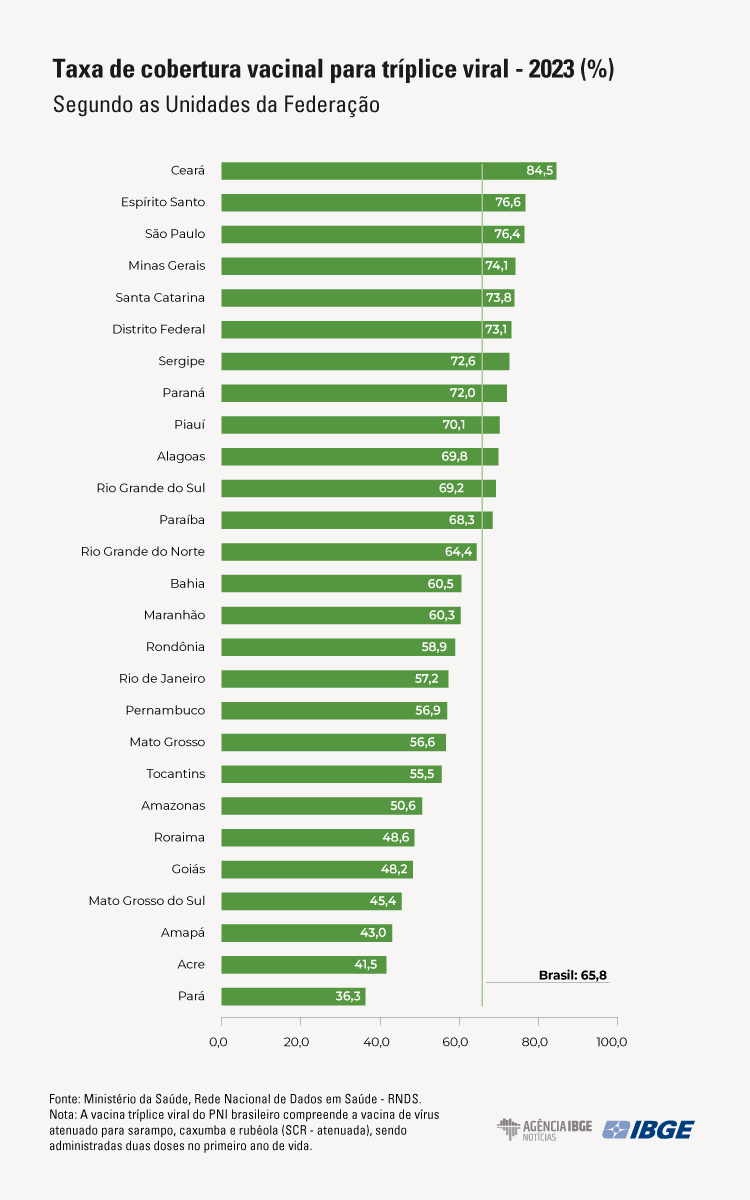
Coverage of the pneumococcal conjugate vaccine (PCV3 – 3rd dose) was also low (81.0%) in an international comparison, being below, for example, South Africa (89.0%) and Mexico (84.0%).
When the coverage rate of the conjugated pneumococcal first dose is considered, vaccination coverage dropped 94.2% in 2015 to 88.5% in 2023, which means a decrease of 6.1%. The North Region was the only one to record increase between these years, from 75.0%, in 2015, to 84.0%, in 2023, that is, growth of 12.0%.
Brazil has the sixth lowest suicide mortality rate
The suicide mortality rates, SDG indicator 3.4.2, consists of the number of deaths (from age 5 on) from purposely self-inflicted injury and sequelae of intentional self-harm , per 100 000 residents, in the total resident population aged 5 and over.
Among G20 member countries, Brazil had, in 2019, the sixth lowest rate in the group, 6.9 suicides per 100 thousand residents aged 5 and over; South Korea had the highest indicator in this group (26 per 100 thousand), and Turkey, the lowest (2.4 per 100 thousand).
Among the Federation Units, Rio Grande do Sul recorded the highest rate (14.5 per 100 thousand) and Rio de Janeiro, the lowest (4.9 per 100 thousand).
